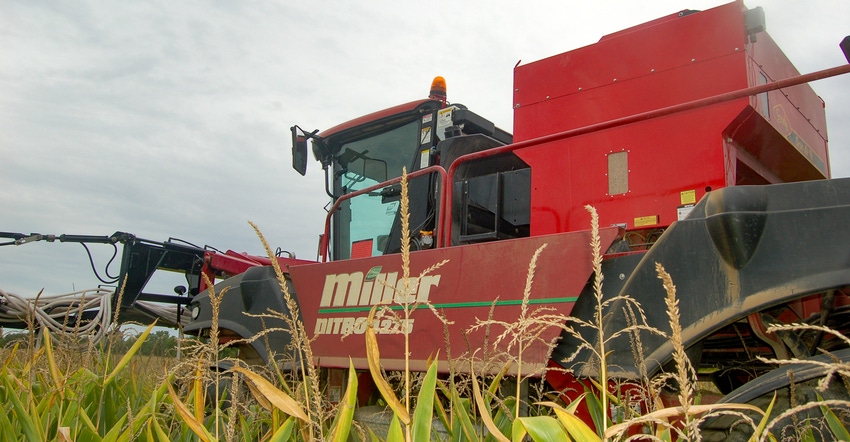August 16, 2018

By Clint Harrison
An important factor in determining seeding method for cover crops is your goal. For example, if your goal is weed suppression and you need a higher seeding rate for biomass and competition, aerial seeding may not be the best option. Aerially seeding large amounts of seed can be expensive. Drilling or broadcasting may be a better option.
On the other hand, if your goal is producing nitrogen, aerial seeding may allow more time for growth and nitrogen fixation because you can seed earlier.
Here are the various ways cover crops can be seeded, followed by their advantages and disadvantages:
• Drilling. Using a drill to seed cover crops is popular. It ensures seed-to-soil contact that promotes faster germination with less seed needed, making it more cost-effective.
However, weather conditions must be favorable, and seeding will be later because it’s after harvest.
• Precision planting. Precision planting with a 15-inch-row planter has all the same benefits as drilling, plus you can place the cover crop close to the planned commodity row. It also allows selection of species that winter-kill, such as radishes and oats, to be used over the planned crop row. This allows for better soil tilth and quicker nutrient uptake.
Weather conditions still need to be favorable, and planting date will be later than some other options. This is also not the best option if erosion is a concern.
• High-clearance seeder. The main benefit of using a high-clearance seeder rig is being able to seed earlier. The application occurs while the cash crop is still standing.
Seed loss is minimal, but seed-to-soil contact isn’t as great as with a drill or planter, or incorporating with a vertical-tillage tool. This also may result in some crop damage due to preharvest application.
• Aerial seeding. Aerial seeding is great if you’re dealing with a wet, late harvest. You may sacrifice some seed loss for earlier establishment, but in return, there’s no soil disturbance. This seeding method is also done while the corn or soybean crop is still in the field, allowing for more species of cover crops to be selected due to earlier seeding dates.
Aerial seeding comes with a higher price tag due to application costs and a higher seeding rate. Another downfall can be more variable establishment. If moisture isn’t available, less consistent seed-to-soil contact can lead to less-than-desirable cover crop success.
• Seeding box with vertical tillage. This is a quick and inexpensive way to get cover crops in the ground. The tillage tool allows for good seed-to-soil contact, the ability to cover a lot of ground fast and relatively easy operation.
The major downfall is the amount of surface disturbance many of these tools can create and the need to seed postharvest.
• Combine seeder. What better way to seed cover crops than during harvest? Seeding and harvesting are done in one pass. Seed loss is minimal, and timing is normally good.
The downside is that refilling the seeder frequently may slow down harvest. Finding the right seeder for your combine may be a challenge, as well.
• Broadcast seeding ahead of vertical tillage. Broadcasting seed with or without fertilizer is another option. Tillage should be light enough to incorporate seed and fertilizer, but not too deep to bury seed.
This method is better than no cover crop. However, it does mean two passes, which increases labor and fuel costs. The potential for stand variability increases.
Harrison is a district conservationist with the Natural Resources Conservation Service. He writes on behalf of the Indiana Conservation Partnership.
You May Also Like




